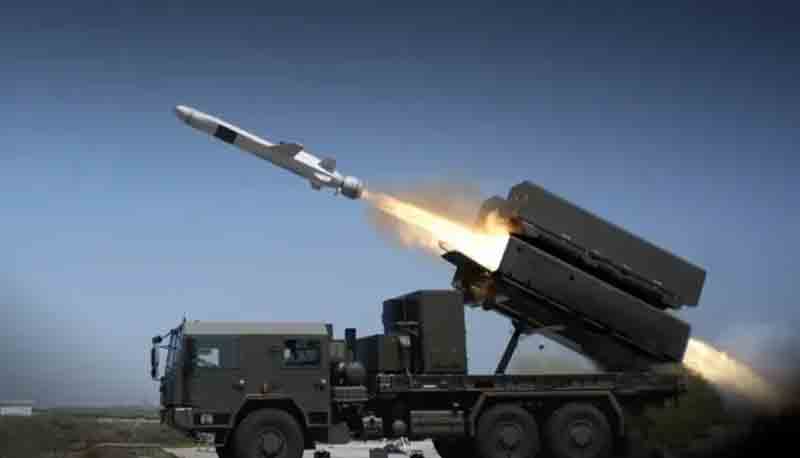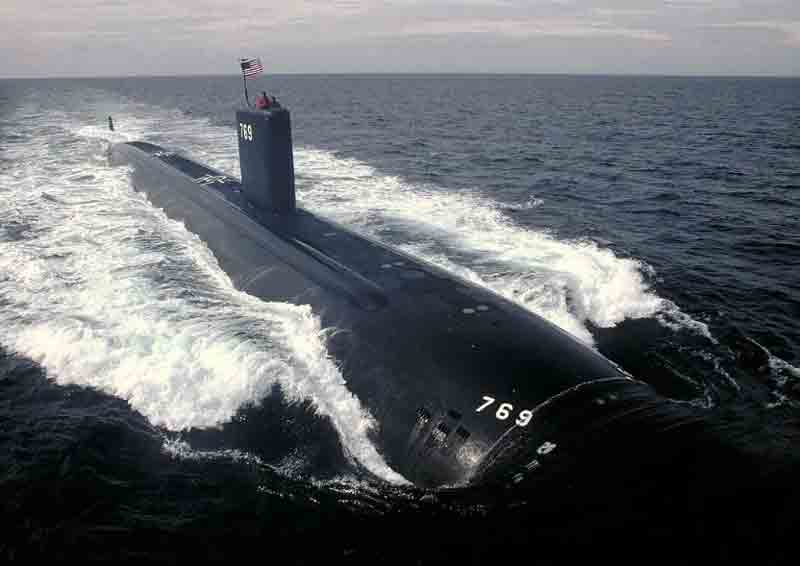In a decisive and strategically planned action, the United States Marine Corps (USMC) has deployed its advanced Navy-Marine Expeditionary Ship Interdiction System (NMESIS), equipped with Naval Strike Missiles (NSM), into the geopolitically sensitive Luzon Strait—one of the most contested and strategically important maritime routes globally. This historic deployment positions U.S. land-based missile systems closer to mainland China than ever before, signaling Washington’s heightened emphasis on force projection and deterrence within the crucial First Island Chain.
The announcement was made by Brigadier General Michael Logico, Assistant Exercise Director and spokesperson for Exercise Balikatan, the premier annual U.S.-Philippines military exercise. “I can confirm that NMESIS is already in the country,” Logico stated during a press briefing at Camp Aguinaldo in Quezon City. “I won’t disclose its location, but it will be involved. It will participate in the exercises,” he added.
Exercise Balikatan 2025—celebrating the 40th iteration of the bilateral exercise—will take place from April 21 to May 9, showcasing some of the most sophisticated joint interoperability drills between the two forces to date.
The NMESIS launcher, a land-based precision strike system designed to eliminate surface threats at extended ranges, incorporates the highly agile Naval Strike Missile, a subsonic sea-skimming cruise missile developed by Norway’s Kongsberg and the American defense leader Raytheon.
Boasting a combat radius of over 185 kilometers, the NSM offers unparalleled lethality and survivability, adept at circumventing contemporary air defenses while ensuring precise strikes on maritime targets. Its introduction greatly enhances the U.S. Marine Corps’ capacity for coastal denial operations, providing a swift, mobile, and lethal response to counteract hostile naval activities in contested waters.
The Luzon Strait, strategically positioned, is a vital maritime route linking the South China Sea to the Philippine Sea and the broader Western Pacific, effectively serving as a strategic pivot in the Indo-Pacific region. For the United States, this strait is crucial to its regional military strategy, granting essential access to the First Island Chain—an arc of islands from Japan through Taiwan to the Philippines—which underpins U.S. deterrence efforts in the Indo-Pacific.
By employing systems like NMESIS and the NSM, the United States is implementing its archipelagic defense strategy, aimed at neutralizing China’s Anti-Access/Area Denial (A2/AD) capabilities and limiting Beijing’s naval aspirations beyond its coastal waters.
Additionally, due to its proximity to Taiwan’s southeastern border, the strait serves as an optimal site for surveillance, early warning, and interception of potential maritime incursions by the People’s Liberation Army (PLA) in the event of a cross-strait conflict.
Maintaining oversight or continuous surveillance of the Luzon Strait enhances Washington’s capacity to react promptly and effectively in defense of Taiwan, a situation that defense strategists in both the Pentagon and Indo-Pacific Command are increasingly considering. At the same time, this deployment underscores America’s steadfast dedication to upholding the principle of Freedom of Navigation Operations (FONOP) in international waters, especially in light of escalating Chinese maritime claims throughout the South China Sea.
By installing advanced missile systems in Luzon, the United States is not only solidifying its military presence in the region but also reinforcing the global standards that support lawful access to crucial sea routes. Conversely, for China, the Luzon Strait is a critical channel essential to its maritime and nuclear strategy, particularly concerning its submarine fleet.
It is among the limited deep-water passageways that enable PLAN vessels, including the Jin-class nuclear-powered ballistic missile submarines (SSBNs) based at Hainan, to access the open Pacific Ocean without navigating the heavily monitored South China Sea.
The capacity of these SSBNs to carry out undetected deterrent patrols in the Pacific is vital for maintaining the credibility of China’s second-strike nuclear capability. However, this strategic flexibility is increasingly jeopardized by the expanding U.S. surveillance and interdiction capabilities established directly in the Luzon Strait.
This situation poses a risk to Beijing’s operational flexibility, raising fears that its deterrent capabilities could be monitored, compromised, or neutralized before they can carry out a retaliatory strike. Luzon is strategically located between Taiwan and northern Philippines—two critical points in the Indo-Pacific framework—making it a likely flashpoint or potential encirclement route in the event of a Taiwan crisis.
A prolonged military buildup by the U.S. or its allies in Luzon could effectively restrict China’s naval operations within the First Island Chain, while also enhancing Taiwan’s maritime defense. Thus, the Luzon Strait serves not only as a navigational bottleneck but also as a strategic pressure point, where control could influence the outcome of any future conflict in the Indo-Pacific. For the U.S., it provides a forward-operating base to counter Chinese expansion, conduct long-range precision strikes, and fulfill commitments to regional partners.
Conversely, for China, it represents a pathway to strategic depth, nuclear deterrence, and the ability to break out into the Pacific. The integration of NMESIS into Exercise Balikatan 2025 is part of a broader deployment of advanced U.S. military capabilities, including integrated air defense systems and sophisticated sensor networks designed to enhance joint readiness and survivability.
The exercise, which translates to ‘shoulder-to-shoulder,’ symbolizes not only military collaboration but also the increasing alignment of strategic interests between Washington and Manila. The decision to station NMESIS in the Philippines was reportedly finalized during a recent visit by U.S. Secretary of Defense Pete Hegseth, who announced a comprehensive security assistance package for Manila.
‘We have agreed that the United States will deploy more advanced military assets to the Philippines, including the NMESIS anti-ship missile system and high-capability unmanned surface vessels (USVs) during Balikatan this April,’ stated Hegseth.
These systems will enable U.S. and Philippine forces to conduct joint training utilizing advanced combat technologies to safeguard Philippine sovereignty,” he stated. The Secretary expressed concerns regarding China’s increasingly aggressive stance in the region, highlighting coercive maritime activities and territorial expansion in contested waters.
Manila is currently engaged in a prolonged territorial dispute with Beijing in the South China Sea, where China asserts nearly 90 percent of the waters under its so-called ‘nine-dash line’—a claim that has been deemed invalid by international law but is vigorously enforced through militarized artificial islands and persistent naval patrols.
The deployment of NMESIS follows last year’s significant introduction of the Mid-Range Capability (MRC) missile system, known as ‘Typhon,’ which is capable of launching both the SM-6 multi-role missile and Tomahawk cruise missiles. The arrival of Typhon provoked strong objections from Beijing due to its range of up to 2,000 kilometers, placing extensive areas of China’s eastern coastline within direct missile range from Philippine territory.
From northern Luzon, Typhon batteries can target China’s military facilities built on reclaimed reefs in the South China Sea, complicating Beijing’s strategic calculations in any potential regional conflict. Each Typhon unit consists of four mobile launchers, a command-and-control center, and support vehicles, operated by the U.S. Army’s Strategic Fires Battalion, which also includes High Mobility Artillery Rocket Systems (HIMARS) and the newly introduced Dark Eagle hypersonic missiles.
Collectively, the deployments of NMESIS and Typhon represent a significant transformation in America’s military posture across the First Island Chain—effectively turning Luzon into a forward-operating missile stronghold aimed at containing Beijing’s influence and supporting the evolving security framework of the Indo-Pacific.
Discover more from Defence Talks | Defense News Hub, Military Updates, Security Insights
Subscribe to get the latest posts sent to your email.





